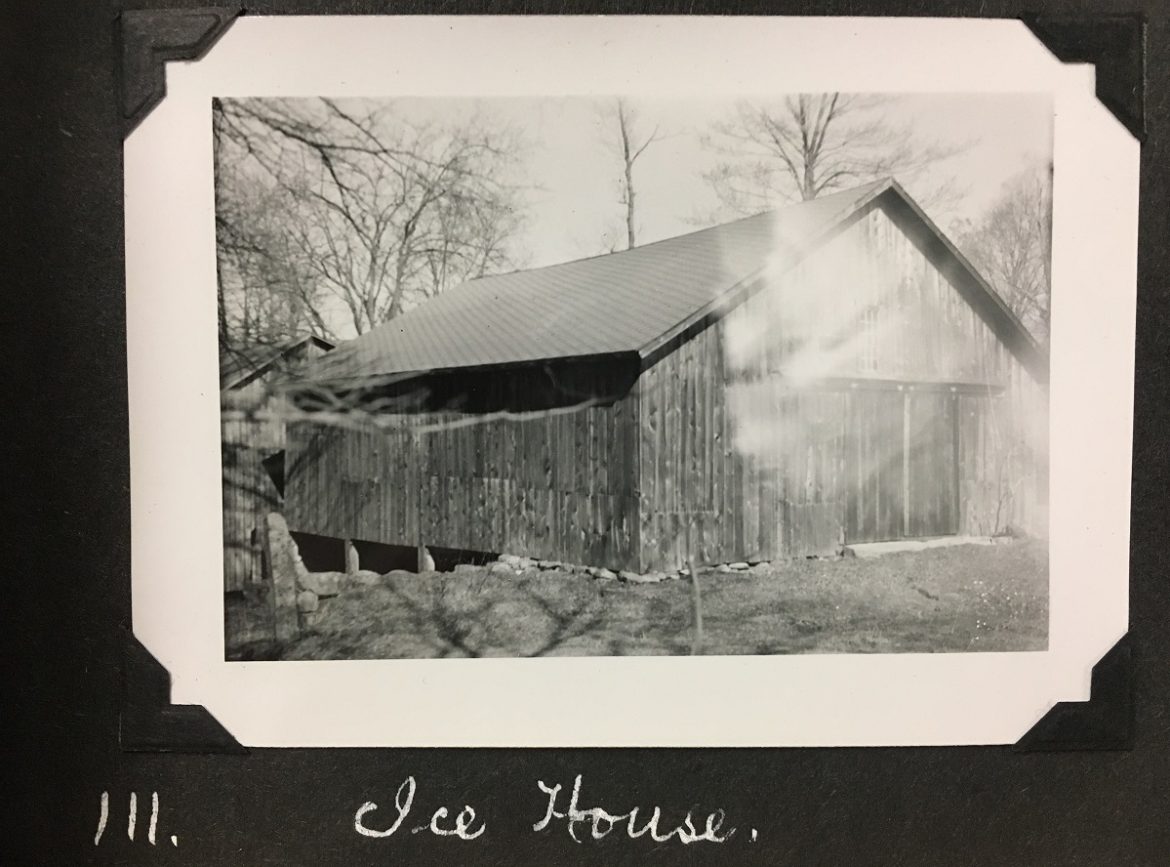
On January 16, 1894, Elder Timothy Rayson of the Center Family, Mount Lebanon Shakers wrote, “Commenced getting in ice…. Over a dozen engaged in the business.” On the 18th, he wrote, “Finished getting in the ice. The weather today was just right for the business.” The harvesting and storing of ice was an important task […]
On January 16, 1894, Elder Timothy Rayson of the Center Family, Mount Lebanon Shakers wrote, “Commenced getting in ice…. Over a dozen engaged in the business.” On the 18th, he wrote, “Finished getting in the ice. The weather today was just right for the business.” The harvesting and storing of ice was an important task for the Shakers in the late 19th century. As Elder Ira Lawson wrote in 1899, “We find in spite of our dislike for winter we enjoy a little of its preserved essence during the warm summer months.”
The absence of an adequate supply caused concern. On January 4, 1890, a Groveland, NY, Shaker reported, “Should the season remain at its present temperature we shall look in vain for that much needed blessing, Ice.” On March 10 of that year, Elder Timothy Rayson wrote, “We are doing our best to secure enough ice to carry us through the summer.” A week before, on March 3, Elder Giles Avery of the Mount Lebanon North Family wrote:
The weather has been very favorable for our operations most of the time, but we have no ice in yet, which causes some anxiety. We use one hundred tons or more, and how to keep from spoiling without ice, we shall have to learn in the future…. We began to feel somewhat alarmed; for ice is not now a mere luxury, but a necessity.
On November 12 of that year, after the summer had passed, Elder Giles wrote:
By limiting its use to the greatest necessity our scanty supply of ice lasted until the middle of October, which spoke well for the patience and economy of the Sisterhood; for none but those experienced can tell of the weary steps saved by this household luxury.
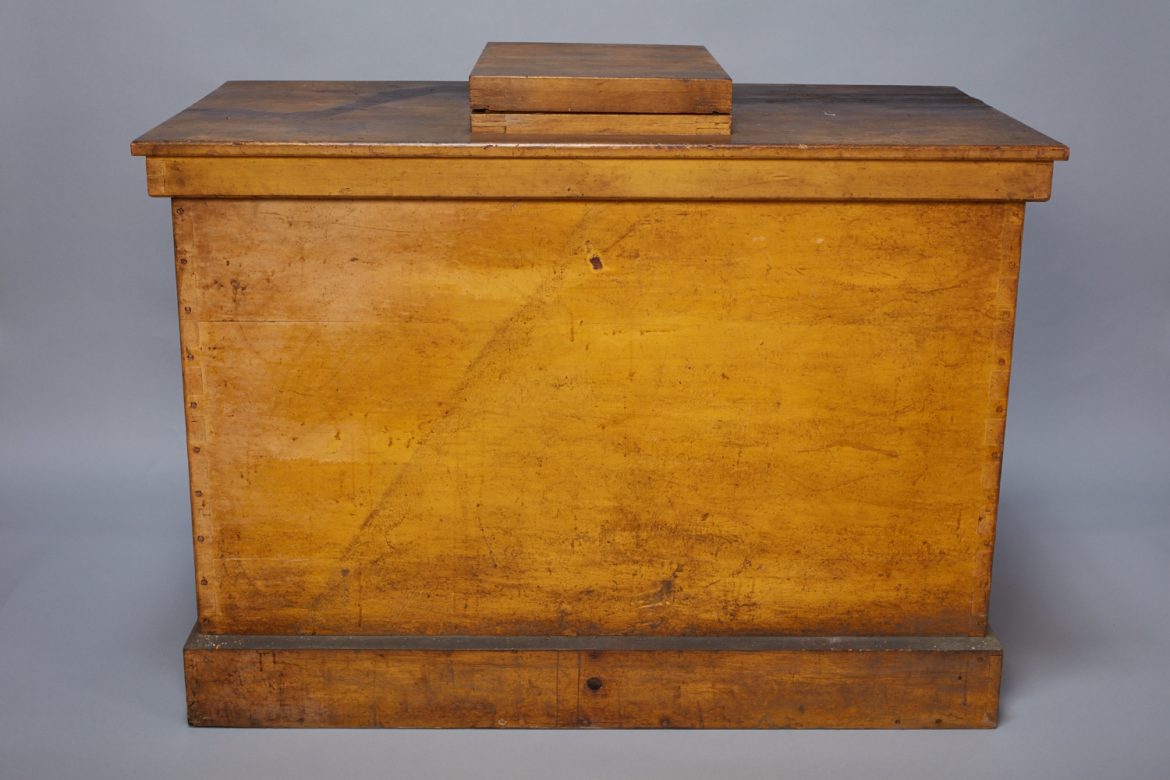
All of the northern Shaker villages gathered and stored ice; some, such as Hancock, MA and Enfield, NH, had an excess supply that they were able to sell to neighboring farms and businesses. On January 16, 1891, an unidentified Shaker from Sabbathday Lake, ME, wrote, “We harvested 122 tons of ice in four and one fourth days. This supplies our family and also two of our neighbors who carry on dairy farms.” In 1890, Elder Ira Lawson of Hancock wrote:
The mild winter sent the ice hunters into this section. Some of them located their works about a mile from us on the shores of the Richmond Lake…. For six weeks there has been two and three hundred teams drawing ice from the Onota and Pontookuc which are six miles from our Village.
The process followed by the Shakers for harvesting ice was the same as that of their worldly contemporaries, and they used commercially manufactured tools for the work.
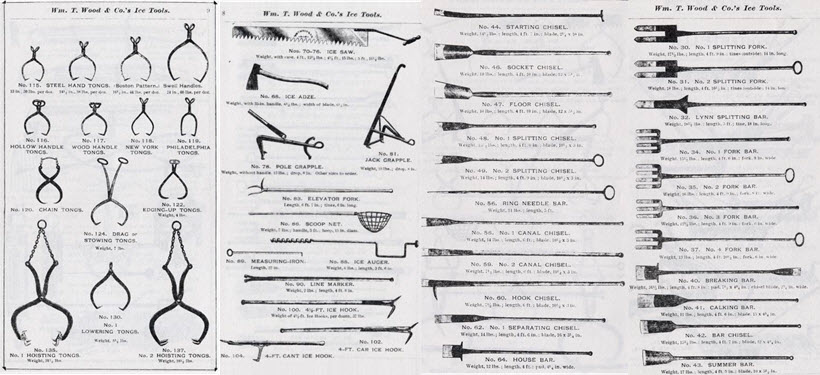
When the ice was deemed to be of sufficient thickness, brethren used an ice saw, which has a long, wide blade with deep teeth, to cut ice into rectangular sections. These sections were cut into blocks or “cakes” using splitting forks. They then used a pair of cast iron ice tongs like the ones below to move blocks onto sleighs or wagons pulled by teams of oxen, and then into ice houses.

The northernmost Shaker villages in Maine and New Hampshire gathered the most ice. Commenting on the shortage described by Elder Giles, an Alfred, ME, Shaker wrote:
We ‘Down Easters’ could but commiserate our Brethren in New York in their scramble for ice. While reading their pitiful story a company from New York were housing from our pond blocks of crystal coldness eighteen to twenty inches thick. They finished cutting the 2nd inst., having housed, altogether, over 40,000 tons.
Similarly, a Canterbury, NH Shaker wrote that same month, “Ice harvest occurred on the 6th and 7th [of March]. Amount stored, 100 tons solid. Ice cut by machinery into cakes 22×22 16 in. thick, supplying our Society and neighbors at the same time.” Later, in 1895, a Canterbury Shaker reported, “Not less than 103 tons was securely packed in the ice house, and this of excellent quality and not less than sixteen inches in thickness.”
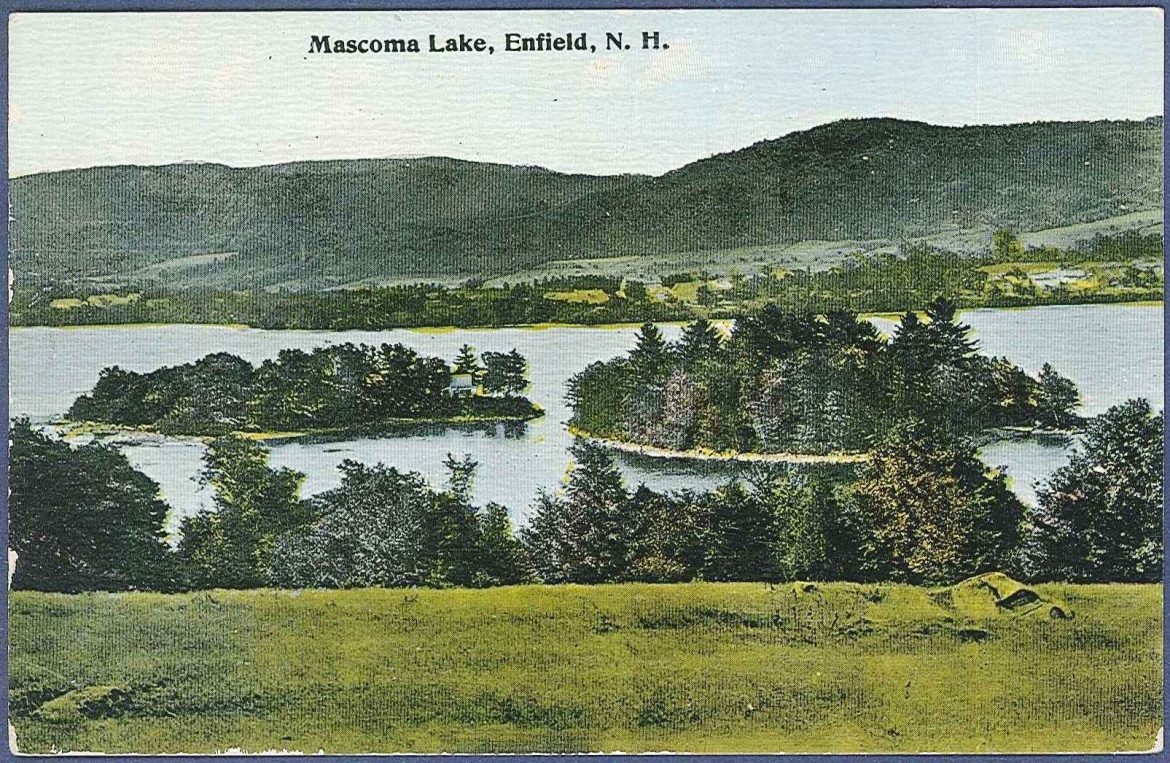
Most of the communities were able to meet their needs, however. In 1895, the Harvard, MA Shakers wrote that they had 80 tons of ice secured. In March of 1893, an Enfield, CT Shaker wrote, “We have an excellent supply of ice, 1500 cakes.” In January of 1899, Elder Calvin Reed of the Church Family, Mount Lebanon, wrote, “We have 175 tons of ice securely housed ready, when summer comes, to cool our milk and broth.”
To store the ice they harvested, the Shakers built ice houses. Several communities built new and improved ice houses late in the century, although the number of Believers in each village had decreased steadily by then. In February of 1890, the Second Family of Watervliet built a new ice house that was twenty by forty feet. In February of 1894, Elder Ira Lawson of Hancock noted:
There has been nearly two hundred tons of ice harvested in the Society, preparatory to the coming warm season, which will soon be with us. It is presumed that a new cold-storage and ice house in connection will be erected here in the Church family, in the course of the season, with many if not all the modern improvements.
In November of 1894, Sister Emoretta Belden stated that it had been completed:
The building is 22×34 ft. with brick walls 18 ft high, laid in red-colored mortar. One half of the lower story is to be used for cold storage. The ice hall and chamber will hold about two hundred tons of ice…. There are rooms for vegetables, fruits, meats, and many things that we may wish to keep for a long or short time.
Some changes were simply labor-saving improvements. In 1893, Elder Timothy Rayson wrote, “The foundations are being laid for an ice house to be located just below the pond where we usually get the ice, so there will be quite a saving of teams.” The North Family, Mount Lebanon Shakers invested particular thought and effort into their ice harvesting and storage methods. In February 1892, Elder Daniel Offord wrote:
We think we have somewhat improved [our ice house], but experience will tell the tale. When the house was first built the door through which we drew the ice was put in the lower side; so we have for the last 25 years been drawing our ice away below the level of the house, then drawing it up with a horse. In repairing we have put a door in the upper side so that the ice would go in of itself. This set us to thinking and we have discovered that the ice will slide directly from the pond into the house if we only give it a chance. So we have been figuring away on this for some time, to have it slide in and not knock the house over. The pond is more than one hundred feet above the house and only a few hundred away from it. Well we thought of a slide and endless chain, with a break &c., &ct. Finally we erected a slide which has about 4 in. to the foot grade (on the average). We have automatic scratchers hinged above the ice on all the steep part; and at the lower end just outside the ice house door we have a large screw, so we can close the lower end and let the ice into the house just as we need it.
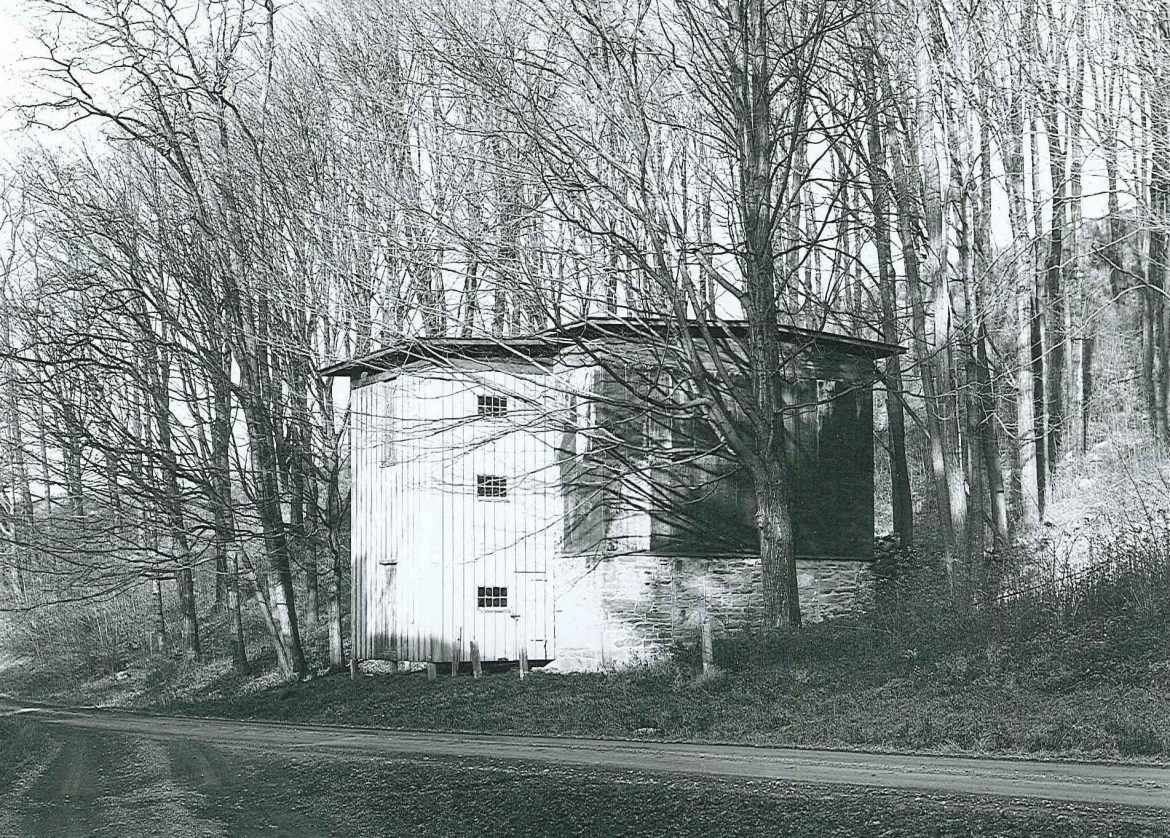
In 1894, Elder Walter Shepard wrote that the North Family had again refined their handling of ice. He wrote of the slide, “We were not able to check the descent of the ice so that we could make use of it until this year when the inventive genius of our Brother Charles Greaves devised a plan for lowering that has worked fairly well this season, and with a little perfecting, will make the slide a great saving of labor in getting the ice.”
Great fun for me to read this
Where was this building located?
We have a blog post on that! https://shakerml.org/ice-house-fruit-house/
Interesting building at Mount Lebanon North Family. Is the pond on the mountain? Where in relation to the existing buildings?
Is the pond referred to also the reservoir dug by the North family for potable water use? Interesting to note the principle of removing air from the produce to maintain freshness. Same principle used today only nitrogen fills rooms of fruits and vegetables in CA for later shipment as far as to the East Coast.